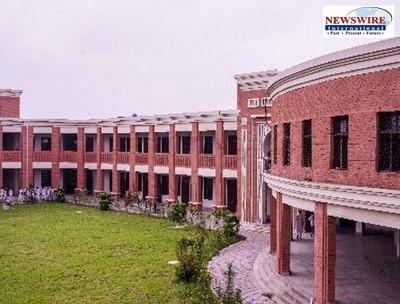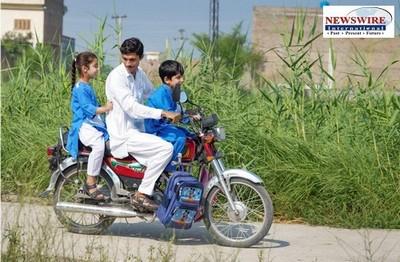
Rebuilding dreams in Khyber Pakhtunkhwa: A story of resilience and renewal
Celina Ali
Islamabad: On her first day back at school, young Reshma Saleem from Amankot marveled at the sight of her newly rebuilt Government Primary School.
The once crumbling structure was now a beacon of hope, boasting freshly painted walls, spacious halls, and solar panels gleaming in the sun. This transformation, funded and supported by the United States Agency for International Development (USAID), marks a new chapter for the conflict-affected region, where communities are rising above years of turmoil and natural disasters.

A new dawn for Khyber Pakhtunkhwa: The KP Reconstruction Program, supported by USAID, is far more than a collection of construction projects. It represents a powerful effort to rebuild not just buildings, but lives. Initially launched to restore essential services in communities devastated by military conflicts and floods, the program evolved to embody resilience and renewal, aiming to empower KP’s people through improved services and infrastructure. From schools to hospitals, water facilities, and sanitation systems, USAID’s partnership has infused KP with the strength to forge a better future.
Inspiring Spaces for Young Dreamers: A highlight of the KP Reconstruction Program is the revitalization of schools across the region. Facilities like the Government Primary School in Amankot have been transformed, providing safe, inspiring learning spaces. Reshma’s school, now equipped with science labs, spacious seating, and wheelchair ramps, has become more than just a building; it’s a place where students are encouraged to dream big. “I love my school more than my own home now,” Reshma told her father, while her friend Anaab shared her aspiration to become a teacher, inspired by the beautiful new surroundings.
These modernized schools are not only equipped with essential resources but are designed to withstand future conflicts and natural disasters. Thanks to USAID’s contribution, schools now have libraries, examination halls, and solar power, creating an environment where students like Mohammad Saleem can study without disruption.

A labor of love and quality: For Salah Ud Din, a Quality Assurance Specialist overseeing the project, the KP Reconstruction Program has been a deeply personal mission. USAID’s role went beyond funding; it was about creating lasting impact. “Our team, in collaboration with USAID, designed schools that would stand the test of time,” Salah explained. The partnership enabled each facility to be equipped with modern amenities, from science labs to solar panels, and even school supplies for students—small yet significant steps toward a brighter future.
Voices of transformation: Javed Khan, a teacher at Government High School in Akbar Pura, shared his pride in the reconstructed building, which can now accommodate over 1,200 students. “This new building has changed everything,” Javed noted. His student, Mohammad, added that the new science labs and dependable electricity have transformed his education. No longer limited by power outages or crowded rooms, he now has a space where he can explore his passion for science.
Beyond schools: rebuilding a community: While schools are a focal point, the KP Reconstruction Program’s impact extends further. USAID’s support has helped reconstruct hospitals, water systems, and irrigation facilities, enhancing quality of life across the region. These improvements are designed with sustainability in mind, ensuring KP’s communities can thrive for generations to come.
A lasting legacy of hope: Ultimately, the KP Reconstruction Program, made possible by USAID, symbolizes resilience, unity, and hope. In a region once marked by hardship, the newly rebuilt schools, hospitals, and infrastructure stand as testaments to the power of community and international support. Today, as Reshma and her classmates walk through the halls of their revitalized school, they carry the dreams of a brighter future for KP, a future built on strength, hope, and the spirit of renewal.
